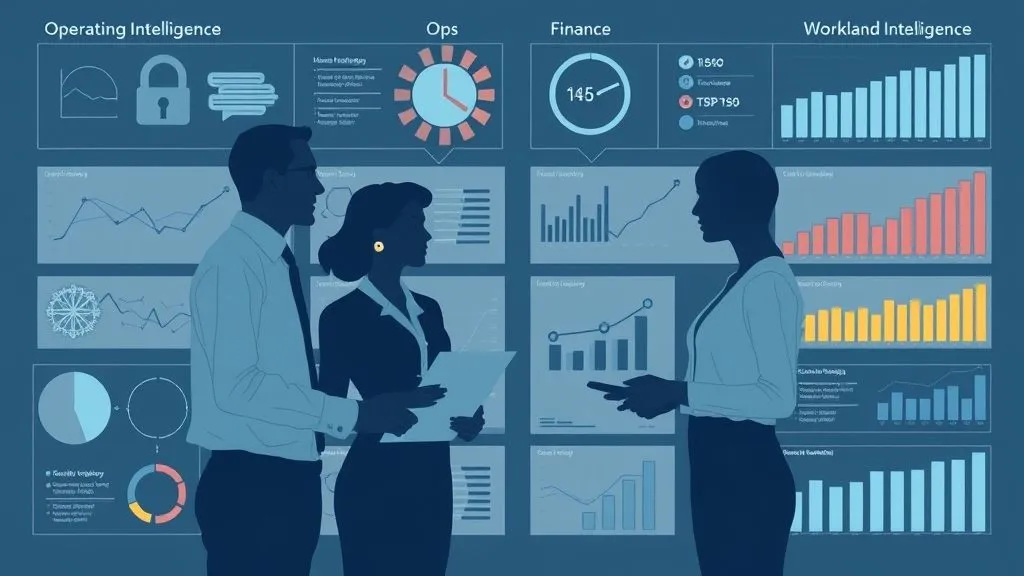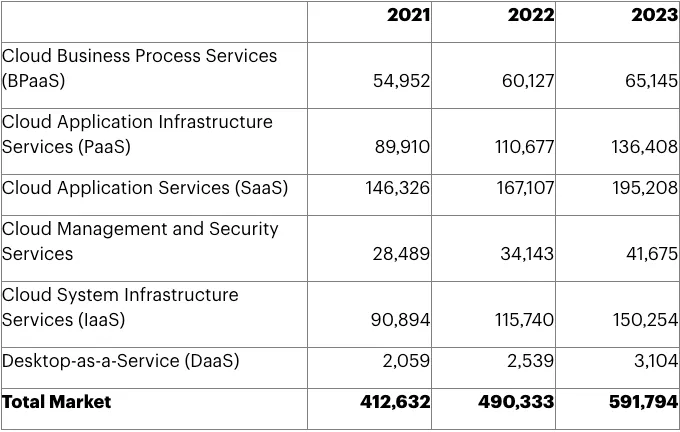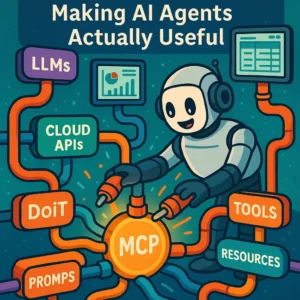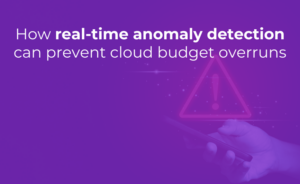
Global spending on public cloud services is projected to exceed $600 billion in 2023, reflecting an astonishing annual growth rate of over 20%. Yet, as organizations rush to adopt cutting-edge cloud solutions, many find themselves grappling with a daunting challenge: managing these expenses effectively while ensuring operational efficiency.
Imagine a mid-sized tech firm that embraced cloud technology to accelerate its growth, only to discover that its cloud spending outpaced its revenue growth by 30%, putting its financial stability at risk. This scenario is not uncommon, as numerous companies struggle to strike the right balance between innovation and cost control in their cloud investments.
As businesses navigate this complex landscape, many are finding great success by embracing two robust methodologies: FinOps and the Well-Architected Cloud Framework. By harmoniously integrating these approaches, organizations can turn their cloud spending from a potential financial burden into a valuable strategic asset, allowing them to unlock the full potential of their technology investments.
Table 1. Worldwide Public Cloud Services End-User Spending Forecast (Millions of U.S. Dollars)

BPaaS = business process as a service; IaaS = infrastructure as a service; PaaS = platform as a service; SaaS = software as a service
Note: Totals may not add up due to rounding.Source: Gartner (October 2022)
The Complementary Relationship Between FinOps and Well-Architected Frameworks
FinOps, or Financial Operations, enhances financial visibility and accountability in cloud spending, shifting cloud cost management from a purely technical task to a strategic business function. The model consists of three phases in the lifecycle: Inform, Optimize, and Operate.
On the other hand, well-architected frameworks outline the best practices for cloud architecture across various pillars, including operational excellence, security, reliability, performance efficiency, and cost optimization. These frameworks ensure that cloud environments are built on a solid technical foundation.

Although FinOps and Well-Architected Frameworks were developed independently, their integration generates substantial value. Well-architected principles provide the technical groundwork for effective FinOps, while FinOps's financial governance optimizes cloud investments.
Driving Business Value Through Collaboration
- Enhanced cost visibility leads to improved architectural decisions. FinOps provides detailed insights into cloud costs, empowering teams to make informed architectural decisions that align with financial considerations. For instance, at DoiT, we conducted a Well-Architected Framework Review for a client and identified unnecessary expenses associated with a non-compliant design. By modifying the architecture and implementing a VPC endpoint, we helped the client reduce costs by 90% within a month.
- Architectural Excellence Unleashes Cost Optimization Opportunities. Well-designed cloud implementations reveal numerous opportunities for cost optimization, which FinOps can help identify and measure. Our DoiT Cloud Intelligence platform enables clients to visualize their infrastructure and costs using Cloud Diagrams, highlighting inefficiencies such as unnecessary cross-AZ data flows that result in excessive charges.
- Shared Responsibility Models Align Teams Around Value Creation. FinOps and well-architected frameworks promote shared responsibility models, encouraging collaboration among engineering, finance, and business teams. For instance, DoiT recently worked with a client already on its FinOps journey to enhance the performance and scalability of its databases while ensuring cost management aligned with its business objectives.
- Continuous Improvement Drives Ongoing Value. The inherent constant improvement cycles within both disciplines generate cumulative benefits over time. For example, DoiT helps clients make optimal decisions about renewing Customer Reserved Instances (CRIs) for RDS and EC2, taking into account all relevant parameters to maximize efficiency.
Our DoiT Insights, a component of DoiT Cloud Intelligence, enables organizations to make better decisions through automated, data-driven recommendations. It focuses on cost efficiency, security, and best practices and analyzes cloud usage across AWS, Google Cloud, Azure, and Snowflake.
By leveraging our Cloud Analytics engine, we continuously identify savings and provide clear advice on architecture, workload adjustments, and storage optimization.
Implementation Strategy: Integrating FinOps and Well-Architected Practices
Organizations that successfully integrate these disciplines typically adhere to the following guidelines:
- Establish a Comprehensive Set of Baseline Metrics: Define clear metrics to measure success and track progress over time.
- Foster Cross-Functional Collaboration: Encourage teams from engineering, finance, and operations to work together towards common goals.
- Leverage Automated Tools and Insights: Utilize platforms like DoiT Cloud Intelligence™ to gain data-driven insights into architecture and spending.
- Design joint review processes to evaluate architectural decisions from both technical and financial perspectives.
- Develop cohesive improvement roadmaps that reconcile reducing technical debt with optimizing costs.
Challenges and Solutions
Despite their complementary nature, integrating these disciplines can present challenges:
Challenge: Different teams typically own architecture and financial governance.
Solution: Create dedicated integration roles or teams that bridge the gap between technical and economic domains.
Challenge: Well-architected and FinOps tools often exist in separate ecosystems.
Solution: Implement integration patterns between tools or select platforms that address both disciplines. DoiT Cloud Intelligence™ integrates tools to address both disciplines.
Challenge: Business stakeholders may prioritize short-term cost savings over architectural excellence.
Solution: Use FinOps practices to quantify the long-term financial benefits of architectural improvements.
Measuring Success: Key Performance Indicators
The successful integration of these disciplines can be measured through KPIs that span both domains:
- Cost per business transaction/outcome
- Architectural efficiency ratio (value delivered per cloud resource consumed)
- Mean time between architectural adjustments for cost reasons
- Engineering time spent on reactive cost firefighting
- Business value delivered per cloud dollar spent
Looking Forward: Evolving Together
As cloud technologies evolve, FinOps and well-architected practices must grow together. The rise of AI/ML workloads, edge computing, and multi-cloud strategies creates new challenges that require integrated approaches.
For example, with DoiT's help, Sweeeft.ai migrated its LLM workloads to AWS using SageMaker, enabling HR teams to reduce hiring time by up to 60%. This partnership prepared Sweeeft.ai for scalability and cost optimization, allowing them to adopt a cloud-forward architecture and implement innovative generative AI solutions. With a solid foundation on AWS AI services, Sweeeft.ai aims for market leadership through continuous improvement, with DoiT supporting the adoption of responsible and trustworthy AI practices.
Conclusion
Integrating FinOps with a well-architected cloud framework offers a powerful strategy for organizations aiming to maximize the business value of their cloud investments. By merging technical excellence with financial governance, organizations can develop cloud environments that are both technically sound and financially efficient.
The most successful organizations do not view these as separate disciplines but as complementary components of a unified cloud governance strategy. When implemented together, they create a virtuous cycle where improved architecture leads to opportunities for cost optimization, and enhanced cost visibility informs better architectural decisions. This integrated approach provides a significant advantage in today's competitive environment, ensuring that cloud investments deliver maximum business value.
This integrated approach provides a significant advantage in today's competitive landscape, ensuring that cloud investments yield maximum business value.
However, despite the benefits, organizations may still have concerns. For example, how can they measure the success of integrating FinOps with Well-Architected Frameworks? What tools or platforms are best suited for implementing these practices together? What training or resources are available to support team collaboration in this integration process?
Fortunately, DoiT has considered these concerns and is well-equipped to help your organization integrate FinOps and the Well-Architected Framework.
We'd love to hear from you! How is your organization approaching cloud financial management and architecture?



